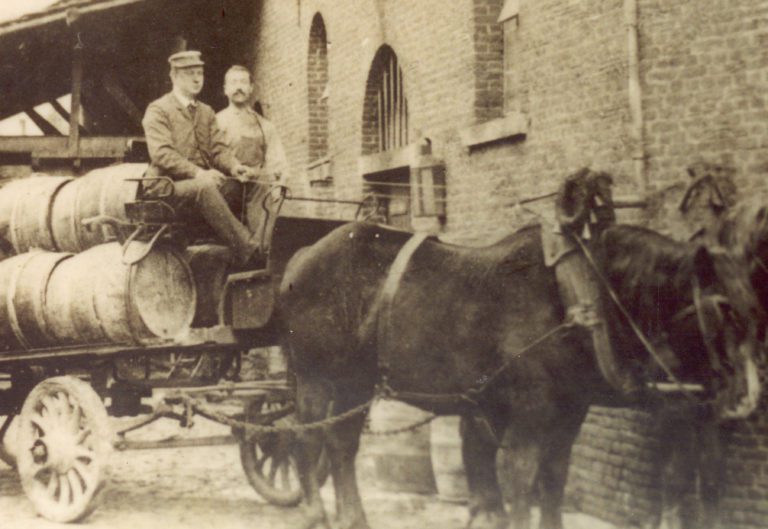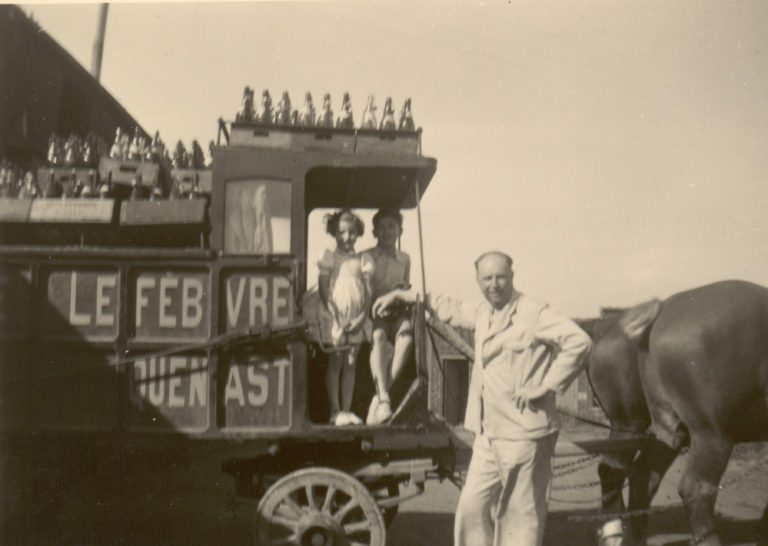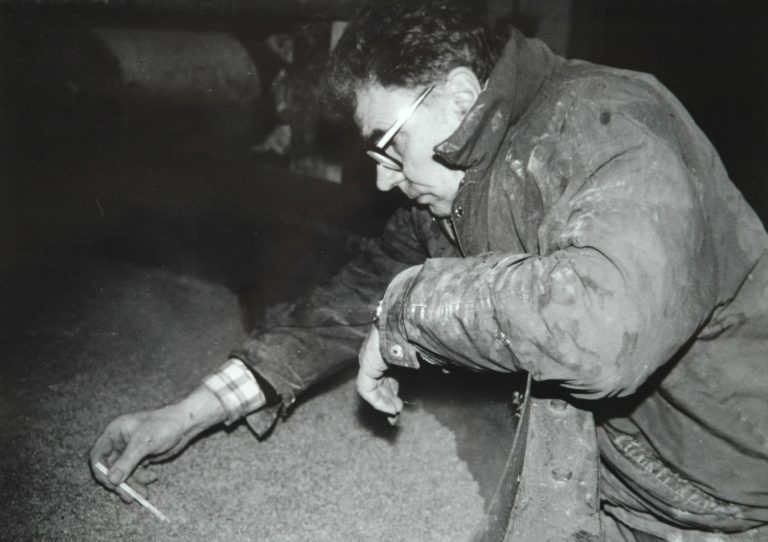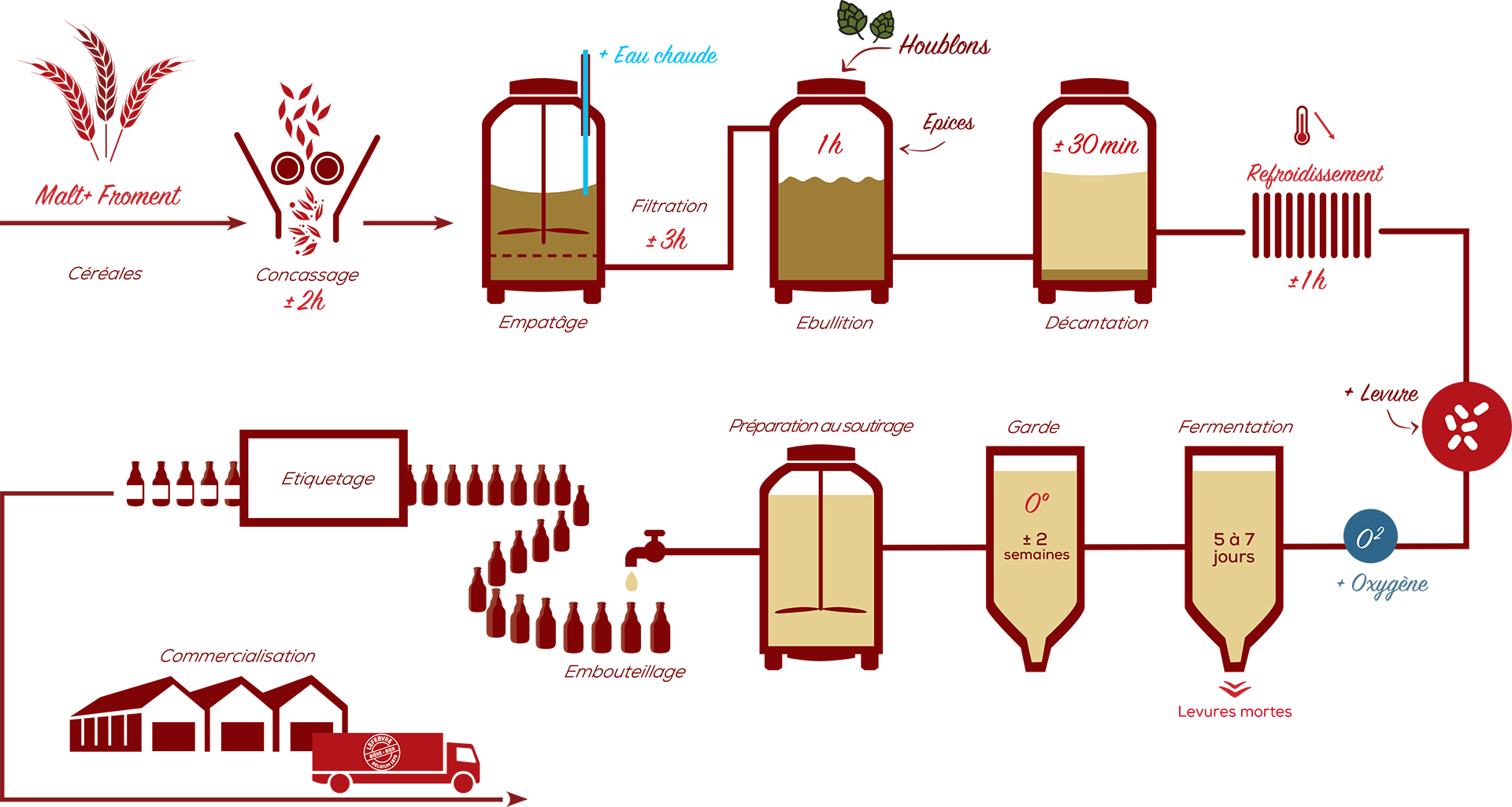The brewery
History & know-how
149 years of history
brewing process
» tooltip_position= »right » hotspot_icon_size_tablet= » » hotspot_icon_size_phone= » » hotspot_icon_size_last_edited= »on|desktop » hotspot_position_vertical_tablet= »10% » hotspot_position_vertical_phone= »10% » hotspot_position_vertical_last_edited= »on|tablet » hotspot_position_horizontal_tablet= »5% » hotspot_position_horizontal_phone= »5% » hotspot_position_horizontal_last_edited= »on|tablet » tooltip_width_tablet= »250px » tooltip_width_phone= »250px » tooltip_width_last_edited= »on|tablet » _builder_version= »4.21.0″ _module_preset= »6eaa28bb-b382-46bf-bfb8-edae8cfd8540″ global_colors_info= »{%22gcid-d44095a9-4bf9-43a7-babd-8a39b85996a5%22:%91%22hotspot_icon_color%22,%22hotspot_ripple_effect_color%22%93} »][/dmpro_image_hotspot_child][dmpro_image_hotspot_child title= »Milling » hotspot_icon= »L||divi||400″ hotspot_position_vertical= »10% » hotspot_position_horizontal= »22.5% » tooltip_title= »Milling » tooltip_desc= »Barley malt and wheat are crushed to open the grains.
» tooltip_width_tablet= »250px » tooltip_width_phone= »250px » tooltip_width_last_edited= »on|tablet » _builder_version= »4.21.0″ _module_preset= »6eaa28bb-b382-46bf-bfb8-edae8cfd8540″ global_colors_info= »{%22gcid-d44095a9-4bf9-43a7-babd-8a39b85996a5%22:%91%22hotspot_icon_color%22,%22hotspot_ripple_effect_color%22%93} »][/dmpro_image_hotspot_child][dmpro_image_hotspot_child title= »Mashing » hotspot_icon= »L||divi||400″ hotspot_position_vertical= »15% » hotspot_position_horizontal= »34.35% » tooltip_title= »Mashing » tooltip_desc= »The mash is the stage during which the grinding (crushed malt) is mixed with hot water. The aim of this step is to transform the starch into fermentable sugars (glucose, fructose, sucrose, maltose, maltotriose). To achieve this, the mixture of water and cereals, known as %22maischen%22, undergoes a stepwise rise in temperature to promote the various reactions required to transform the starch.
» tooltip_width= »450px » tooltip_width_tablet= »350px » tooltip_width_phone= »350px » tooltip_width_last_edited= »on|tablet » _builder_version= »4.21.0″ _module_preset= »6eaa28bb-b382-46bf-bfb8-edae8cfd8540″ global_colors_info= »{%22gcid-d44095a9-4bf9-43a7-babd-8a39b85996a5%22:%91%22hotspot_icon_color%22,%22hotspot_ripple_effect_color%22%93} »][/dmpro_image_hotspot_child][dmpro_image_hotspot_child title= »Filtration » hotspot_icon= »L||divi||400″ hotspot_position_vertical= »17% » hotspot_position_horizontal= »42.5% » tooltip_title= »Filtration » tooltip_desc= »The wort is re-circulated prior to filtration to form the filter cake. The filter cake is made up of non-solubilized solid particles from the cereals. These particles are called %22draffs%22, and are used to feed livestock on farms near our brewery.
It is during filtration that the liquid is separated from the draffs to obtain the wort.
» tooltip_width= »450px » tooltip_width_tablet= »350px » tooltip_width_phone= »350px » tooltip_width_last_edited= »on|tablet » _builder_version= »4.21.0″ _module_preset= »6eaa28bb-b382-46bf-bfb8-edae8cfd8540″ global_colors_info= »{%22gcid-d44095a9-4bf9-43a7-babd-8a39b85996a5%22:%91%22hotspot_icon_color%22,%22hotspot_ripple_effect_color%22%93} »][/dmpro_image_hotspot_child][dmpro_image_hotspot_child title= »Boiling » hotspot_icon= »L||divi||400″ hotspot_position_vertical= »27% » hotspot_position_horizontal= »53.4% » tooltip_title= »Boiling » tooltip_desc= »The wort obtained during filtration is boiled for about 1 hour.
This is an essential step in the brewing process, as it has several functions. At certain key moments, the brewer adds various hops and spices. The addition of bittering hops gives the beer its bitter edge, while aromatic hops and spices give its aroma.
Boiling sterilizes the wort and evaporates unwanted volatile substances.
» tooltip_width= »450px » tooltip_width_tablet= »350px » tooltip_width_phone= »350px » tooltip_width_last_edited= »on|tablet » _builder_version= »4.21.0″ _module_preset= »6eaa28bb-b382-46bf-bfb8-edae8cfd8540″ global_colors_info= »{%22gcid-d44095a9-4bf9-43a7-babd-8a39b85996a5%22:%91%22hotspot_icon_color%22,%22hotspot_ripple_effect_color%22%93} »][/dmpro_image_hotspot_child][dmpro_image_hotspot_child title= »Decanting » hotspot_icon= »L||divi||400″ hotspot_position_vertical= »27% » hotspot_position_horizontal= »71% » tooltip_title= »Decanting » tooltip_desc= »After boiling, decanting aims to remove the solid particles left by the addition of hops and spices, naturally clarifying the wort.
» tooltip_width_tablet= »250px » tooltip_width_phone= »250px » tooltip_width_last_edited= »on|tablet » _builder_version= »4.21.0″ _module_preset= »6eaa28bb-b382-46bf-bfb8-edae8cfd8540″ global_colors_info= »{%22gcid-d44095a9-4bf9-43a7-babd-8a39b85996a5%22:%91%22hotspot_icon_color%22,%22hotspot_ripple_effect_color%22%93} »][/dmpro_image_hotspot_child][dmpro_image_hotspot_child title= »Cooling » hotspot_icon= »L||divi||400″ hotspot_position_vertical= »13.5% » hotspot_position_horizontal= »90% » tooltip_title= »Cooling, addition of yeast and oxygen » tooltip_desc= »The wort is cooled to around 20°C and oxygenated before entering the fermentation tank, where the yeast is added. This is the only time in the brewing process when oxygen is required, since the yeast needs it to develop at the start of fermentation.
» tooltip_position= »left » tooltip_width= »400px » tooltip_width_tablet= »350px » tooltip_width_phone= »350px » tooltip_width_last_edited= »on|tablet » _builder_version= »4.21.0″ _module_preset= »6eaa28bb-b382-46bf-bfb8-edae8cfd8540″ global_colors_info= »{%22gcid-d44095a9-4bf9-43a7-babd-8a39b85996a5%22:%91%22hotspot_icon_color%22,%22hotspot_ripple_effect_color%22%93} »][/dmpro_image_hotspot_child][dmpro_image_hotspot_child title= »Fermentation » hotspot_icon= »L||divi||400″ hotspot_position_vertical= »57.5% » hotspot_position_horizontal= »80.25% » tooltip_title= »Fermentation » tooltip_desc= »The fermentation process converts sugars into alcohol and carbon dioxide. In other words, the wort is transformed into beer.
» tooltip_width_tablet= »250px » tooltip_width_phone= »250px » tooltip_width_last_edited= »on|tablet » _builder_version= »4.21.0″ _module_preset= »6eaa28bb-b382-46bf-bfb8-edae8cfd8540″ global_colors_info= »{%22gcid-d44095a9-4bf9-43a7-babd-8a39b85996a5%22:%91%22hotspot_icon_color%22,%22hotspot_ripple_effect_color%22%93} »][/dmpro_image_hotspot_child][dmpro_image_hotspot_child title= »Maturing » hotspot_icon= »L||divi||400″ hotspot_position_vertical= »72% » hotspot_position_horizontal= »67% » tooltip_title= »Maturing » tooltip_desc= »Aging takes place in the same tank as fermentation, at a temperature of around 0°C. During this stage, which generally lasts a fortnight, the beer matures and its taste is sharpened. The yeast precipitates and the beer clarifies.
» tooltip_width_tablet= »250px » tooltip_width_phone= »250px » tooltip_width_last_edited= »on|tablet » _builder_version= »4.21.0″ _module_preset= »6eaa28bb-b382-46bf-bfb8-edae8cfd8540″ global_colors_info= »{%22gcid-d44095a9-4bf9-43a7-babd-8a39b85996a5%22:%91%22hotspot_icon_color%22,%22hotspot_ripple_effect_color%22%93} »][/dmpro_image_hotspot_child][dmpro_image_hotspot_child title= »Preparation for bottling » hotspot_icon= »L||divi||400″ hotspot_position_vertical= »65% » hotspot_position_horizontal= »52.5% » tooltip_title= » Preparation for bottling » tooltip_desc= »After aging, the beer is centrifuged. The purpose of this operation is to remove yeast cells and other suspended particles still present in the beer. It is also during this stage that saturation is corrected, if necessary.
Our special beers are not filtered, but simply centrifuged.
» tooltip_width= »400px » tooltip_width_tablet= »350px » tooltip_width_phone= »350px » tooltip_width_last_edited= »on|tablet » _builder_version= »4.21.0″ _module_preset= »6eaa28bb-b382-46bf-bfb8-edae8cfd8540″ global_colors_info= »{%22gcid-d44095a9-4bf9-43a7-babd-8a39b85996a5%22:%91%22hotspot_icon_color%22,%22hotspot_ripple_effect_color%22%93} »][/dmpro_image_hotspot_child][dmpro_image_hotspot_child title= »Bottling » hotspot_icon= »L||divi||400″ hotspot_position_vertical= »70% » hotspot_position_horizontal= »30% » tooltip_title= »Bottling » tooltip_desc= »Bottles are cleaned before filling.
We also have our own keg lines. As for bottles, kegs are cleaned before filling.
» tooltip_width_tablet= »250px » tooltip_width_phone= »250px » tooltip_width_last_edited= »on|tablet » _builder_version= »4.21.0″ _module_preset= »6eaa28bb-b382-46bf-bfb8-edae8cfd8540″ global_colors_info= »{%22gcid-d44095a9-4bf9-43a7-babd-8a39b85996a5%22:%91%22hotspot_icon_color%22,%22hotspot_ripple_effect_color%22%93} »][/dmpro_image_hotspot_child][dmpro_image_hotspot_child title= »Labeling » hotspot_icon= »L||divi||400″ hotspot_position_vertical= »65.5% » hotspot_position_horizontal= »20% » tooltip_title= »Labeling » tooltip_desc= »After filling, the bottles are labeled, then, before being placed in cases or cartons, and if the beer is to be refermented, it passes through a temperature-controlled room for refermentation in the bottle.
At the keg line, the kegs are labeled after filling, before being palletized.
» tooltip_width= »400px » tooltip_width_tablet= »350px » tooltip_width_phone= »350px » tooltip_width_last_edited= »on|tablet » _builder_version= »4.21.0″ _module_preset= »6eaa28bb-b382-46bf-bfb8-edae8cfd8540″ global_colors_info= »{%22gcid-d44095a9-4bf9-43a7-babd-8a39b85996a5%22:%91%22hotspot_icon_color%22,%22hotspot_ripple_effect_color%22%93} »][/dmpro_image_hotspot_child][dmpro_image_hotspot_child title= »Distribution » hotspot_icon= »L||divi||400″ hotspot_position_vertical= »83.5% » hotspot_position_horizontal= »23.5% » tooltip_title= »Distribution » tooltip_desc= »Whether bottled or kegged, our beers are now ready to be enjoyed! This last step is made possible by the cooperation of various distributors!
So, which of our beers will you enjoy?
» tooltip_position= »right » tooltip_width= »400px » tooltip_width_tablet= »350px » tooltip_width_phone= »350px » tooltip_width_last_edited= »on|tablet » _builder_version= »4.21.0″ _module_preset= »6eaa28bb-b382-46bf-bfb8-edae8cfd8540″ global_colors_info= »{%22gcid-d44095a9-4bf9-43a7-babd-8a39b85996a5%22:%91%22hotspot_icon_color%22,%22hotspot_ripple_effect_color%22%93} »][/dmpro_image_hotspot_child][/dmpro_image_hotspot]
Céréales
Notre malt ainsi que notre froment proviennent d’agricultures et de malteries belges ou du nord de la France.
Concassage
Le malt d’orge et le froment sont concassés afin d’ouvrir les grains.
Empâtage
L’empâtage est l’étape durant laquelle la mouture (malt concassé) est mélangée à l’eau chaude.
L’objectif de cette étape est de transformer l’amidon en sucres fermentescibles (glucose, fructose, saccharose, maltose, maltotriose). Pour ce faire, le mélange eau et céréales, que l’on appelle le
maischen, subit une montée de température par palier afin de favoriser les différentes réactions nécessaires à la transformation de l’amidon.
Filtration
Le moût est mis en re-circulation avant la filtration afin de constituer le gâteau de filtration. Ce dernier est constitué des particules solides non solubilisées des céréales. Ces particules sont appelées drêches; elles serviront à l’alimentation du bétail des fermes avoisinantes à notre brasserie.
C’est au moment de la filtration que le liquide est séparé des drêches afin d’obtenir le moût.
Ébullition
Le moût, obtenu lors de la filtration, est bouilli pendant 1h environ.
Cette étape est essentielle lors du brassage, car elle recouvre plusieurs fonctions. Le brasseur ajoute, à certains moments clés, divers houblons et épices. L’ajout d’houblons amérisants confère à la bière son côté amer, tandis que le houblon aromatique et les épices lui confèrent ses arômes.
L’ébullition permet la stérilisation du moût et l’évaporation des substances volatiles indésirables.
Décantation
La décantation vient après l’ébullition et a pour but d’éliminer les particules solides issues de l’ajout des houblons et des épices afin de clarifier naturellement le moût.
Refroidissement, ajouts des levures et de l’Oxygène
Le moût est refroidi à environ 20°C et il est oxygéné avant d’entrer dans la cuve de fermentation, où les levures seront ajoutées. C’est le seul moment où, en brasserie, l’oxygène est nécessaire, puisque la levure en a besoin pour son développement en début de la fermentation.
Fermentation
Le processus de fermentation va permettre de convertir les sucres en alcool et en gaz carbonique.
Autrement dit, le moût se transforme en bière.
Garde
La garde se déroule dans la même cuve que la fermentation à une température qui avoisine les 0°C.
Lors de cette étape, qui dure en général une quinzaine de jours, la bière mûrit et son goût s’affine. La levure précipite et la bière se clarifie.
Préparation au soutirage
Après la garde vient la centrifugation. Cette opération a pour but de retirer les cellules de levure et d’autres particules en suspension encore présentes dans la bière. C’est également durant cette étape que la saturation est corrigée si nécessaire.
Nos bières spéciales ne sont pas filtrées mais simplement centrifugées.
Embouteillage
Les bouteilles sont nettoyées avant le remplissage.
Nous possédons aussi nos propres lignes d’enfûtage. Comme pour les bouteilles, les fûts sont nettoyés avant le remplissage.
Étiquetage
Après remplissage, les bouteilles sont étiquetées, puis, avant d’être mises en casiers ou en cartons et si la bière doit être refermentée, celle-ci passe par une pièce à température contrôlée en vue de sa refermentation en bouteille.
Au niveau de la ligne d’enfûtage, les fûts sont étiquetés après le remplissage avant d’être mis sur palettes.
Commercialisation
En bouteille ou en fût, nos bières sont désormais prêtes à être dégustées! Cette dernière étape est réalisée grâce à la coopération de divers distributeurs !
Alors, laquelle de nos bières allez-vous savourer ?




